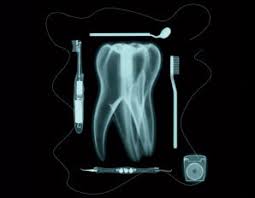Dental x-rays are one of the most common procedures your dentist may perform, and are a vital part of any pre-treatment exam for many dental problems. However, do you know what these x-rays actually show?
Dental x-rays are a powerful tool that can help your dentist see potential weaknesses, infections, and other issues before they become serious. They also provide a powerful diagnostic tool in helping determine the best treatment options for you. For children, dental x-rays are a quick way to make sure teeth are developing properly, and to spot potential dental problems before they develop.
While x-rays are not particularly good at showing detailed images of soft structures such as the gums, they are ideal for hard structures such as teeth and the bones of the skull.
X-rays can allow your dentist to quickly and easily spot a developing cavity or determine how far a cavity extends into a tooth. This is essential information needed to treat a cavity before it extends through the hard enamel into the soft pulp of the inner tooth, where it can cause serious, painful issues and the need for invasive treatment such as root canal.
And, while dental x-rays cannot show small, hairline cracks, they can help your dentist locate larger cracks in teeth before they become serious. Dental x-rays are also a valuable tool in helping your dentist make sure that fillings are properly positioned and are not shifting, corroding, or lifting around the edges.
Dental x-rays are particularly critical for children or young adults. By allowing dentist to see under the gum line and into the inner structure of the jaw and teeth, they can help your dentist make sure that adult teeth – including wisdom teeth – are developing properly underneath the baby teeth. Dental x-rays are a key part in ensuring that a child’s teeth are developing correctly and helping avoid painful conditions such as impacted teeth, which are teeth which develop incorrectly and are prevented from reaching their normal position, often by colliding with or ‘impacting’ neighbouring teeth.
Contact us for more information or to schedule an appointment.
